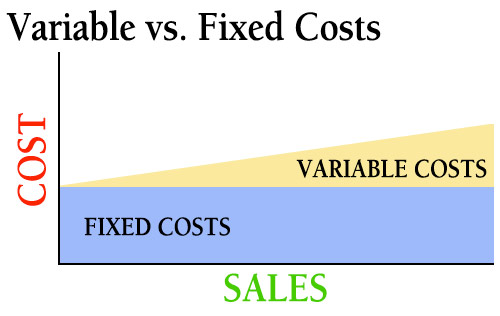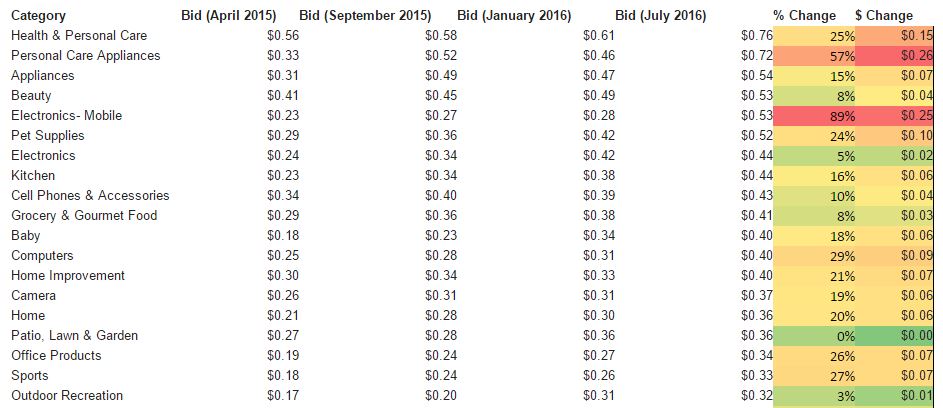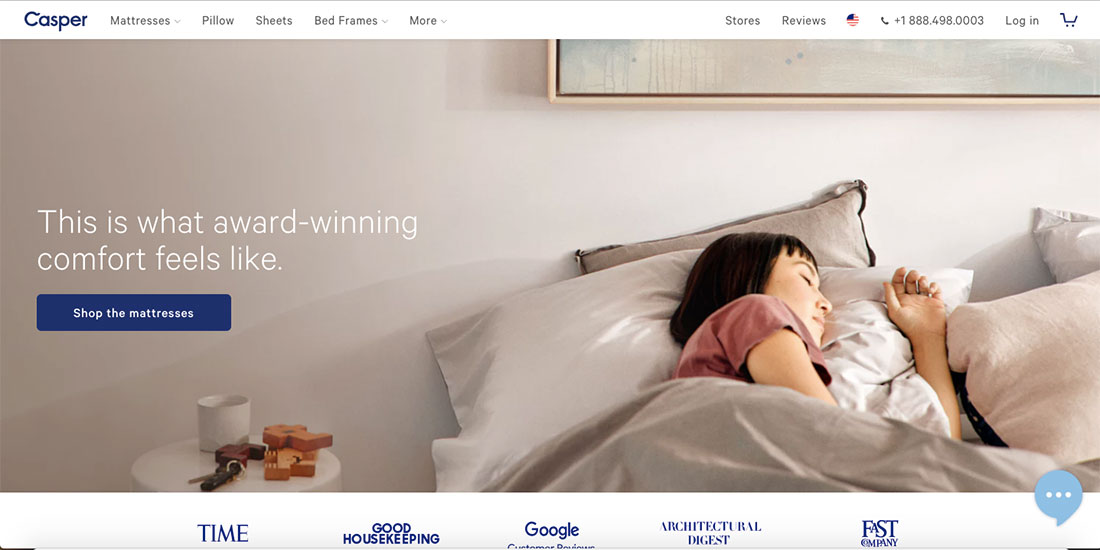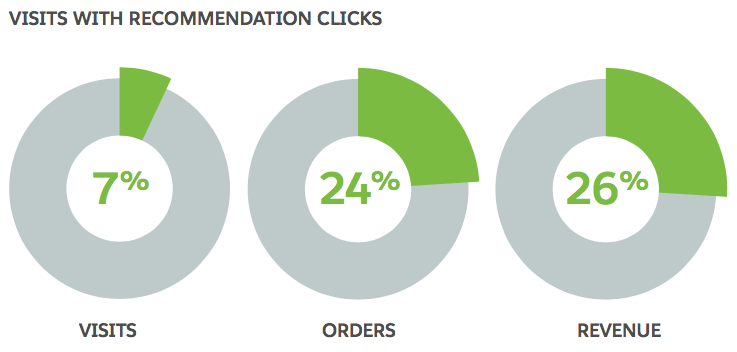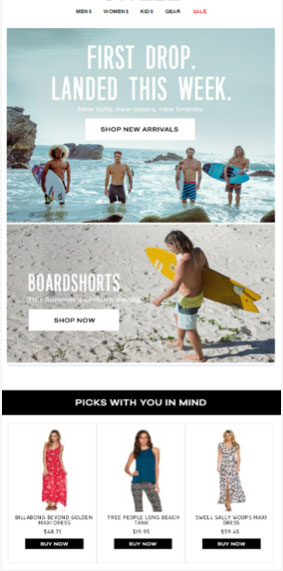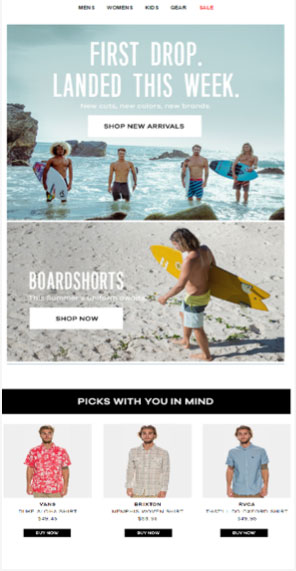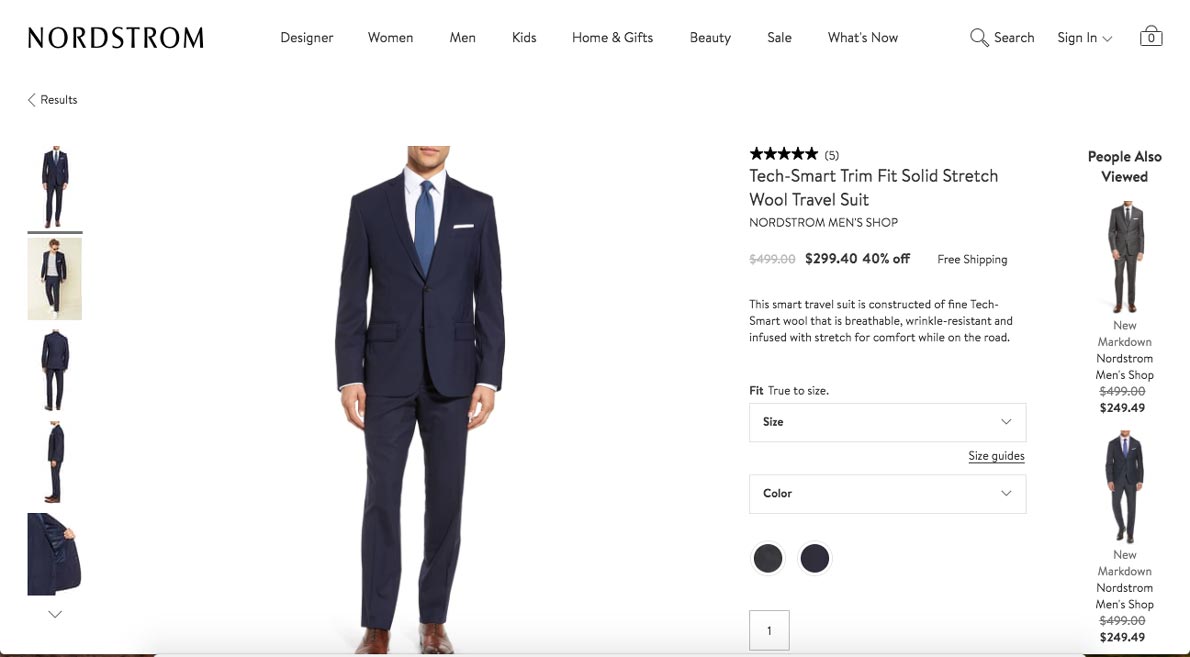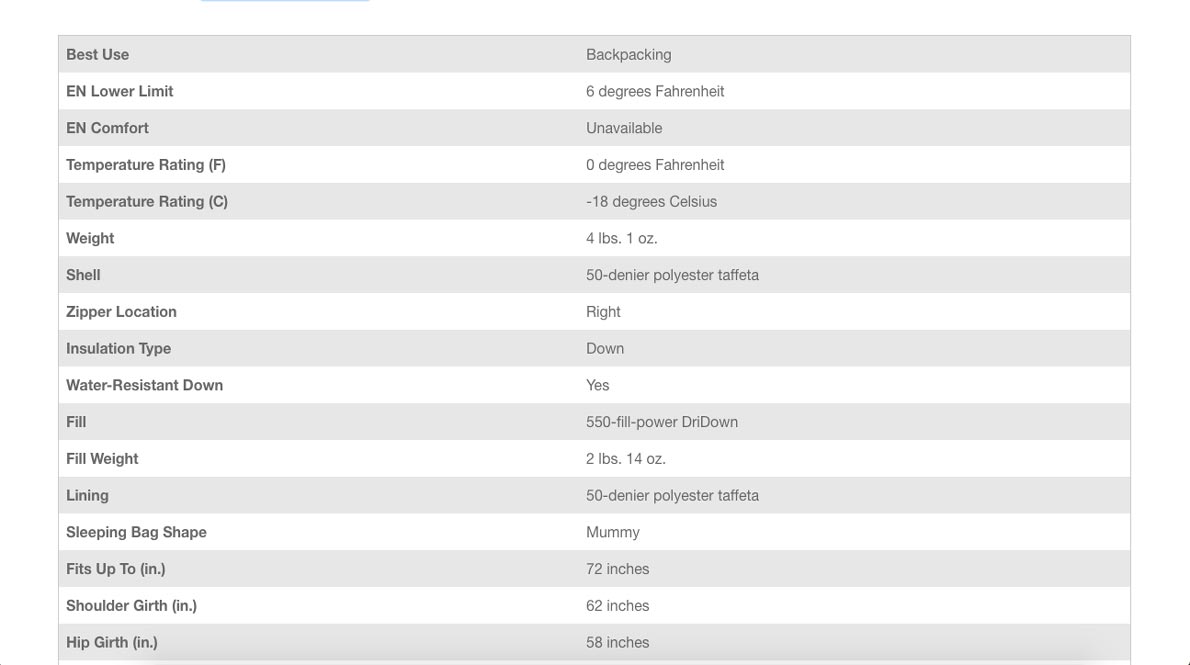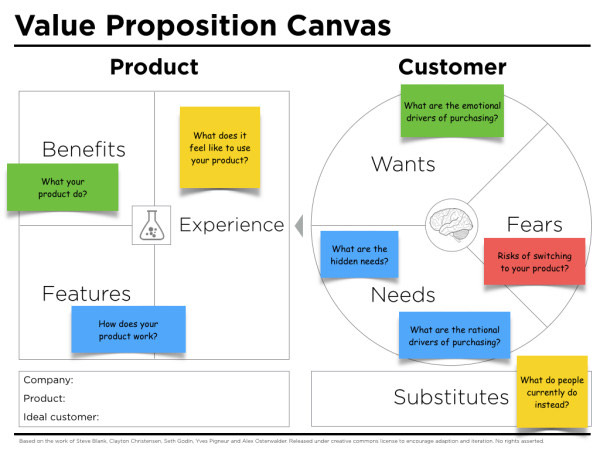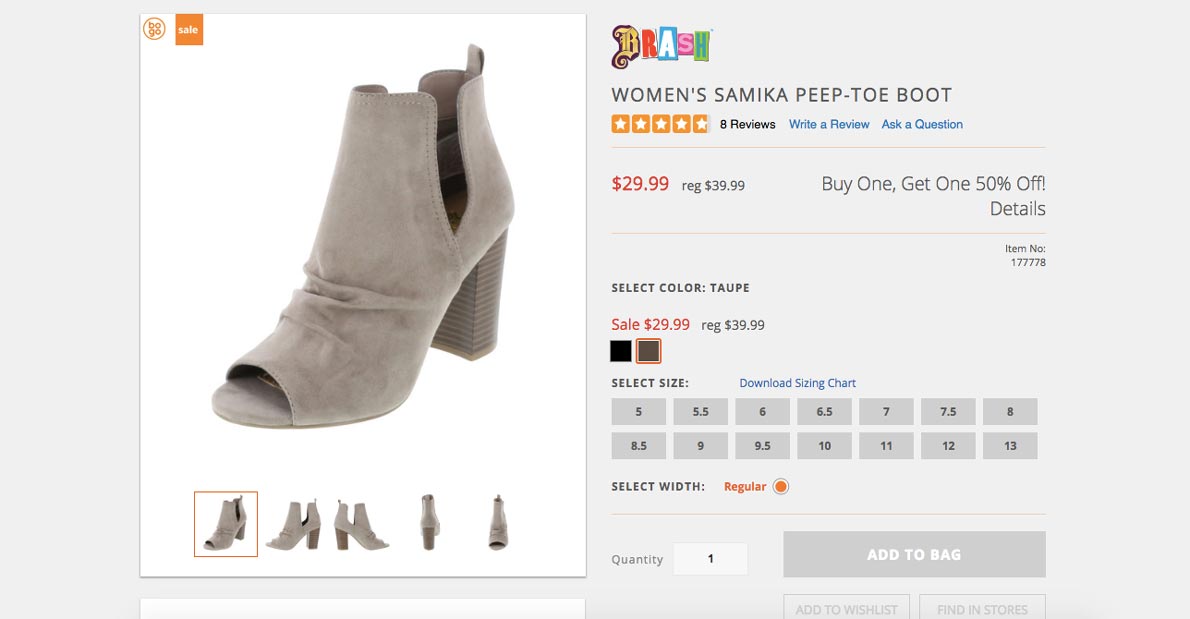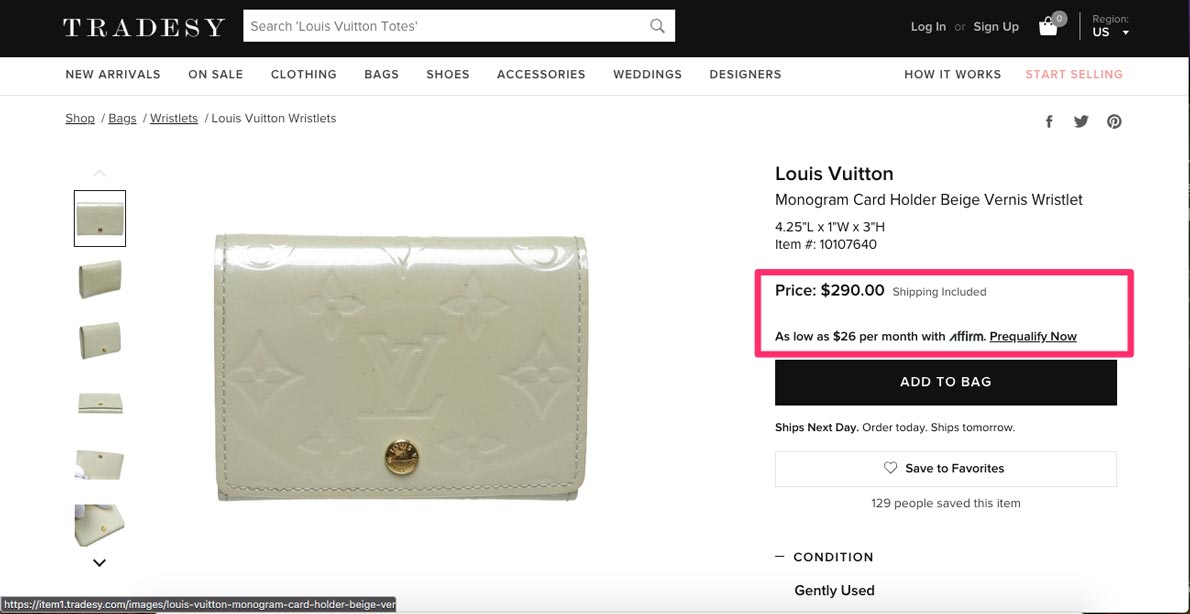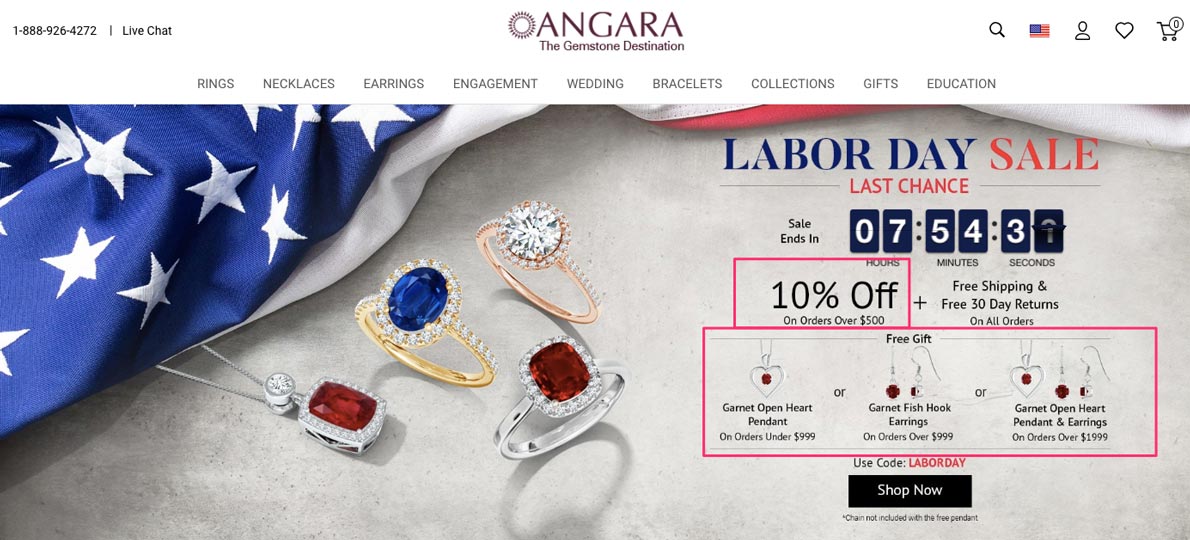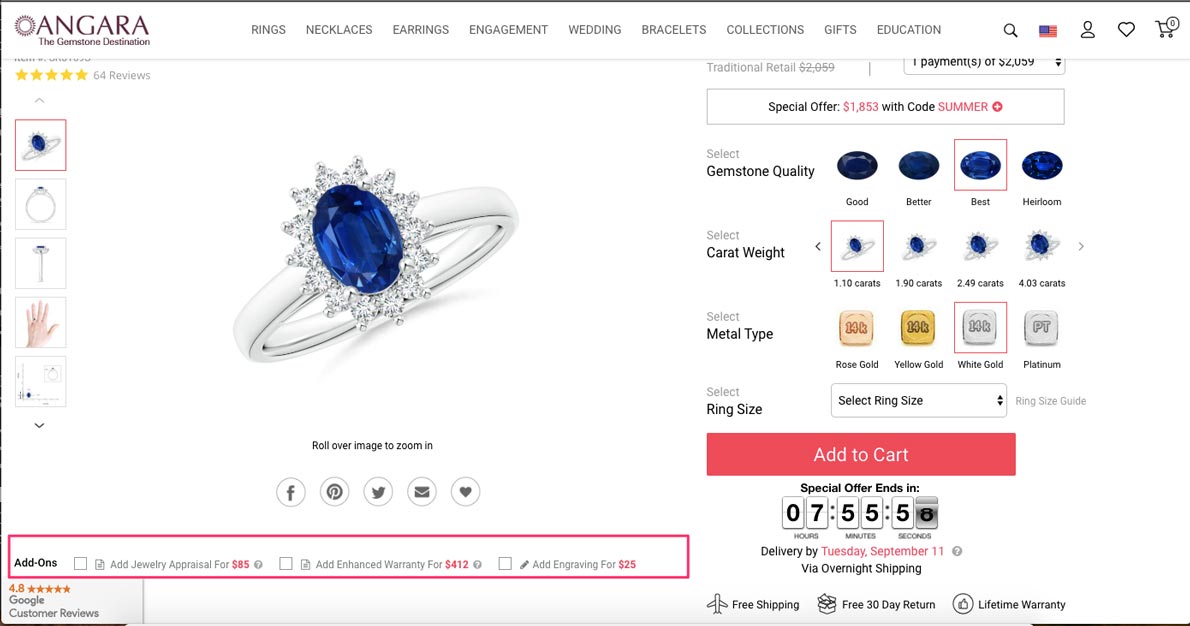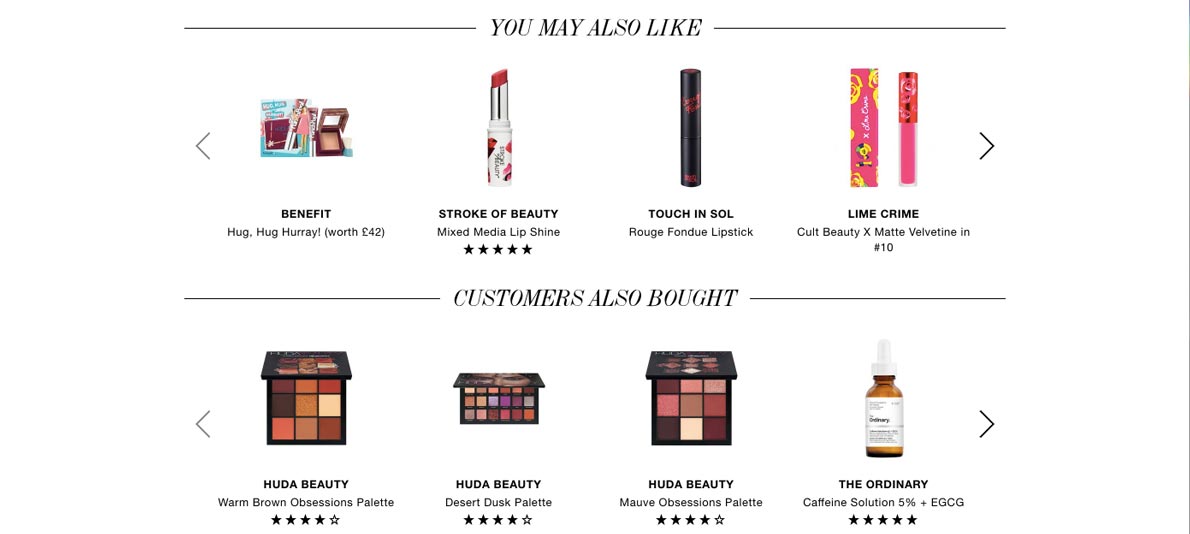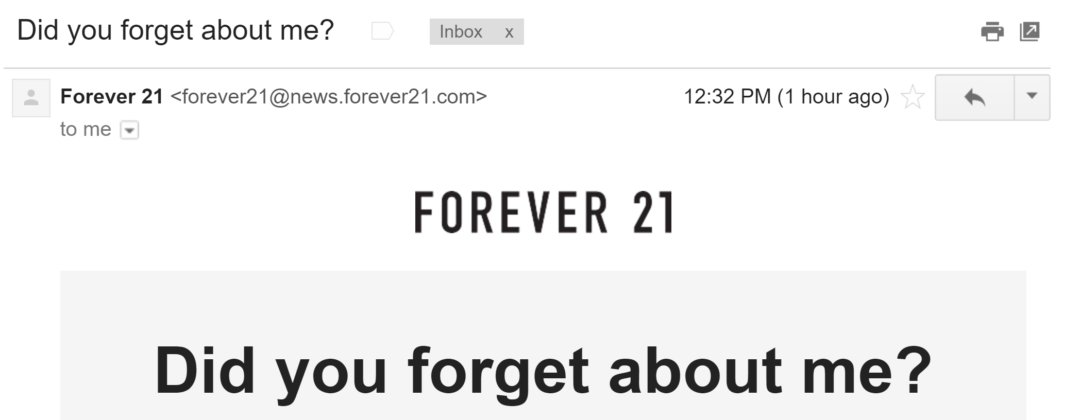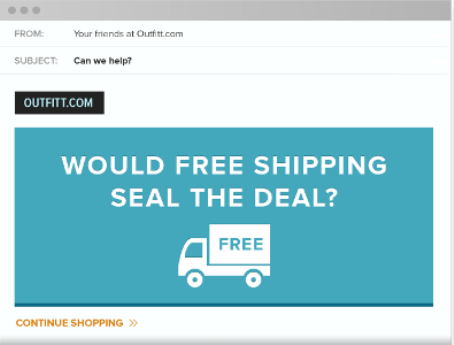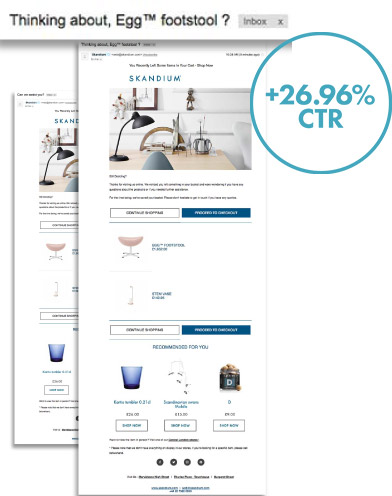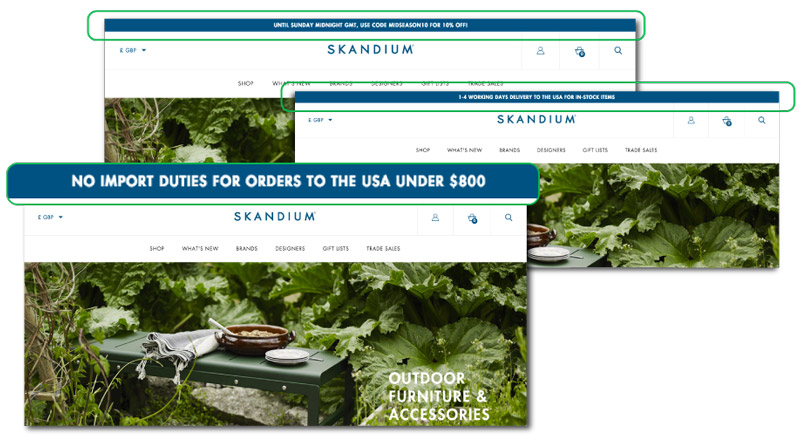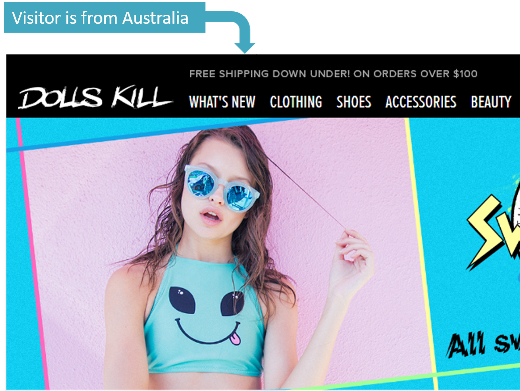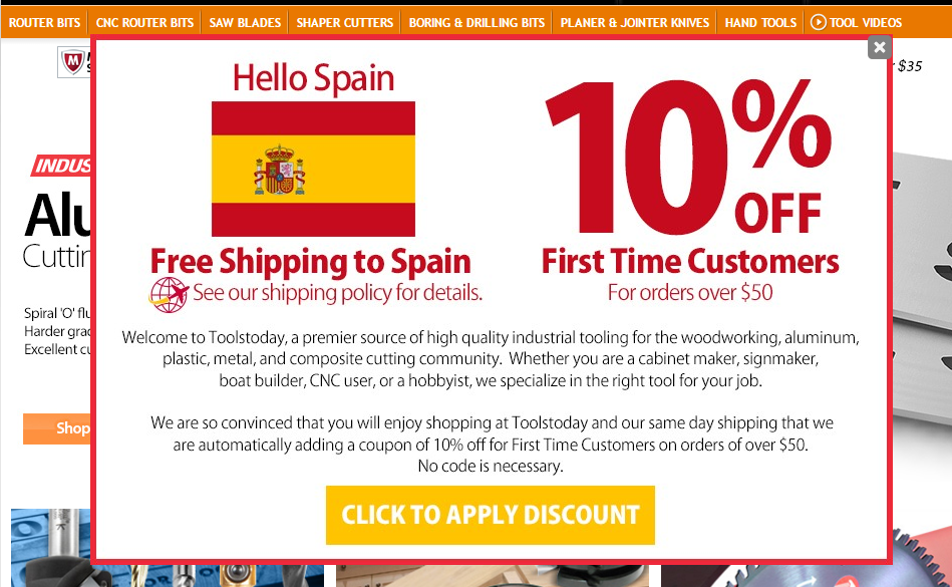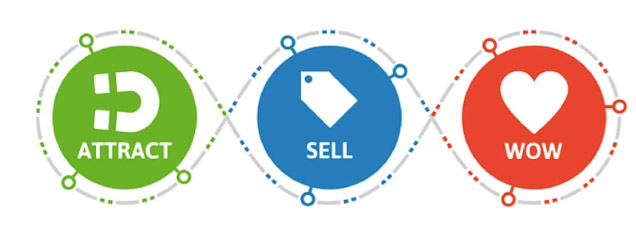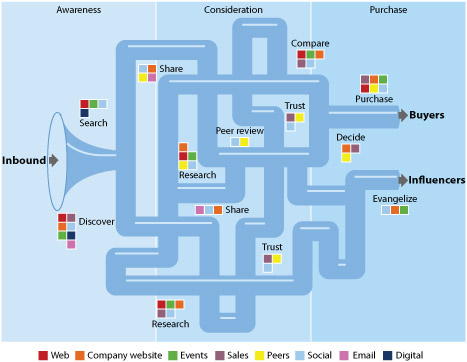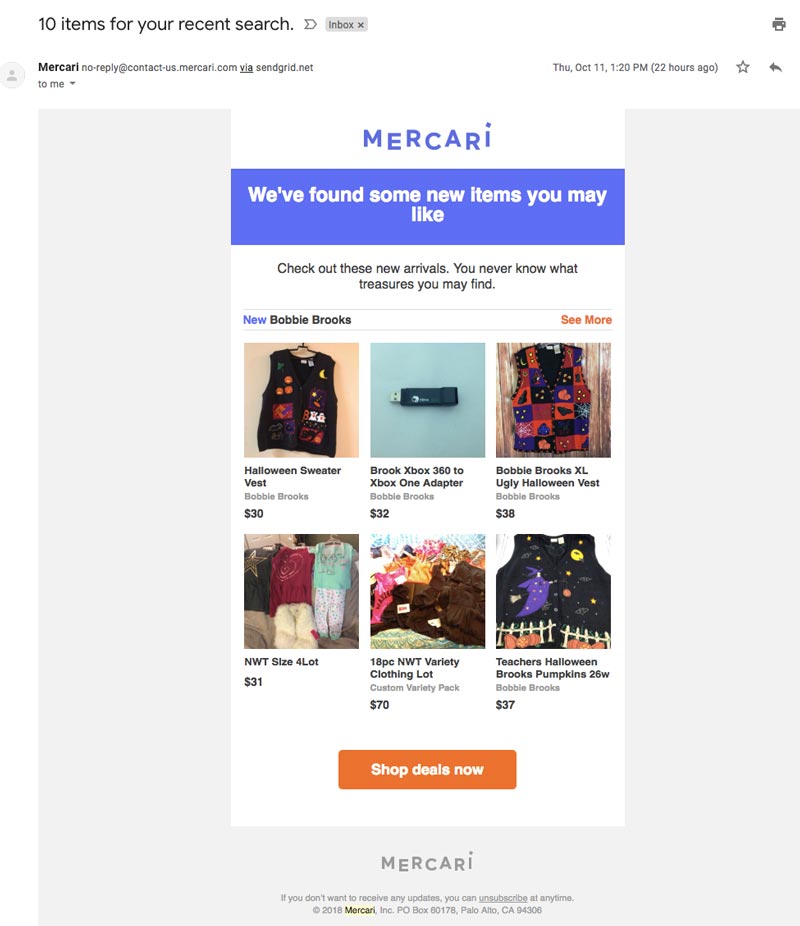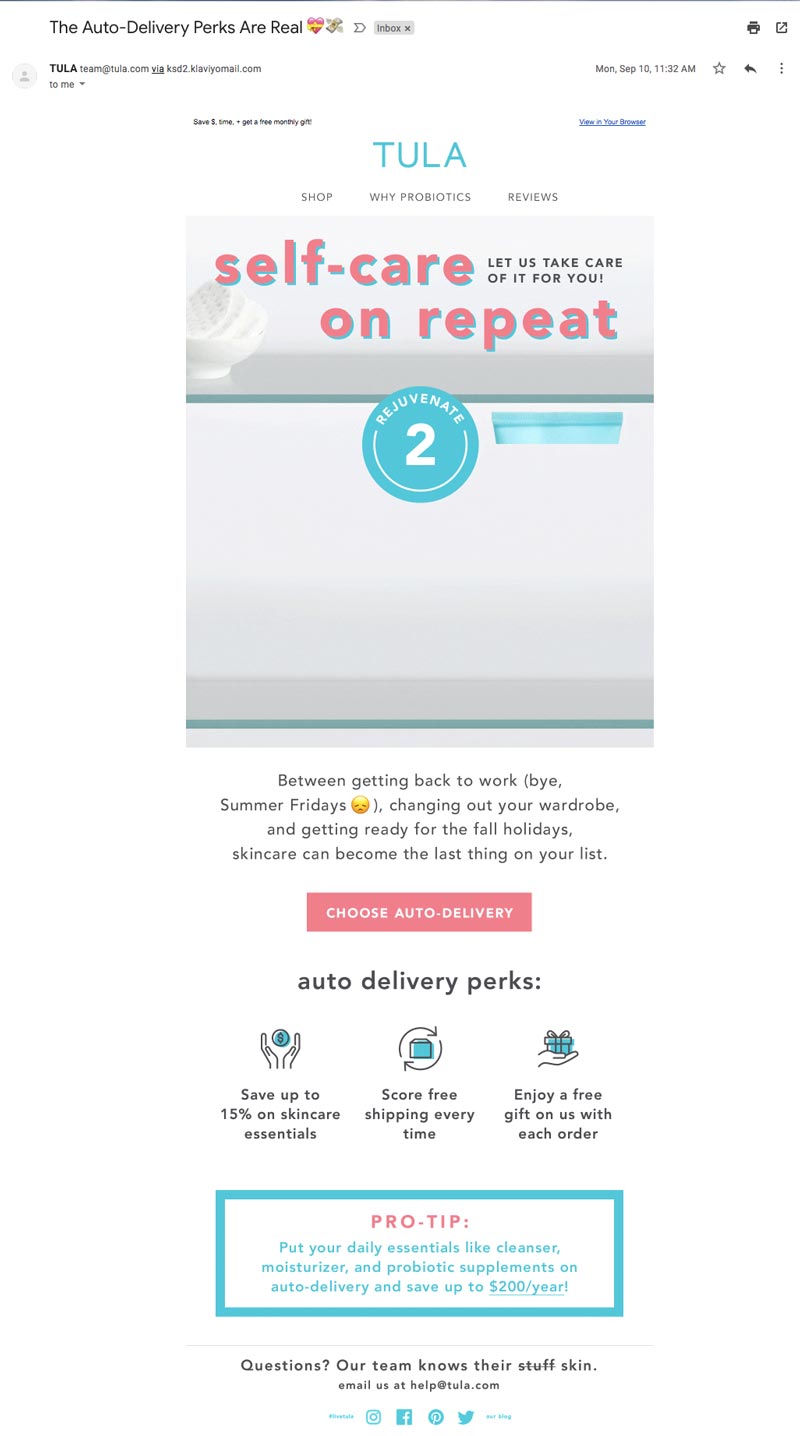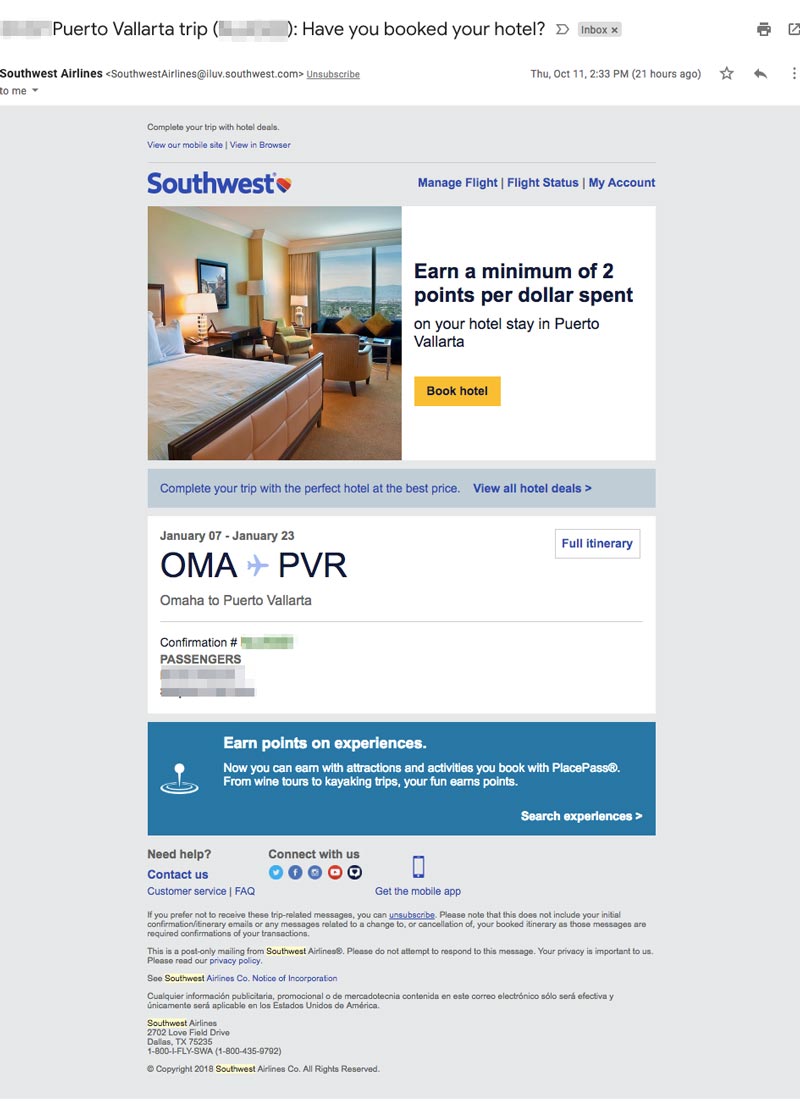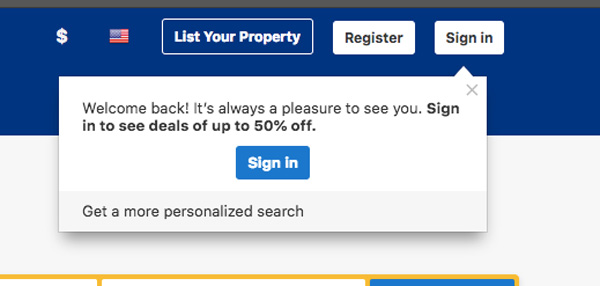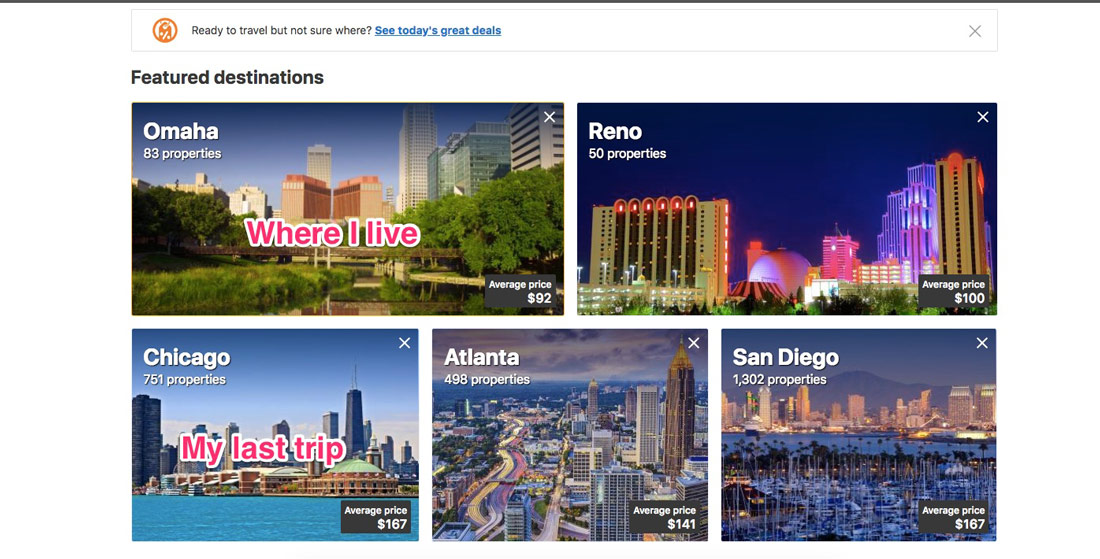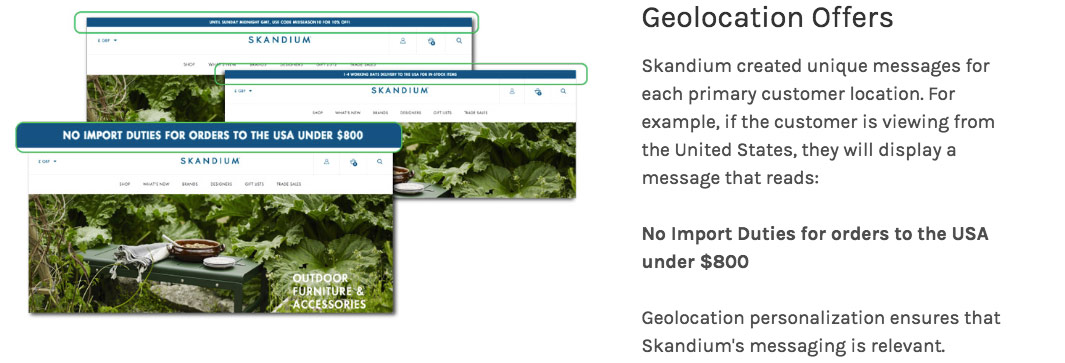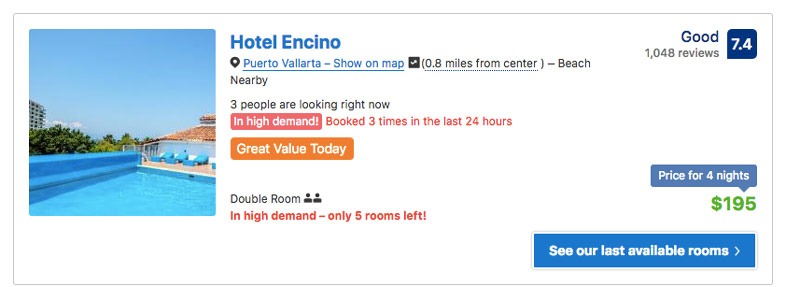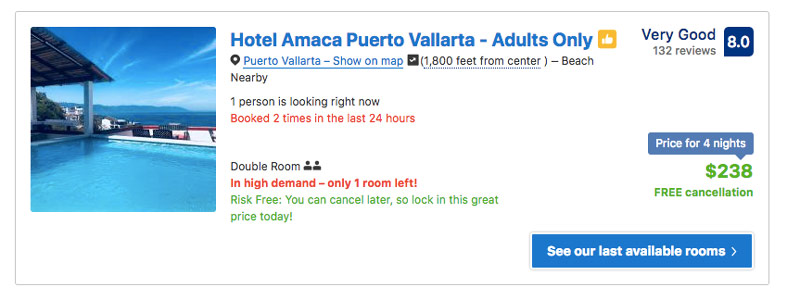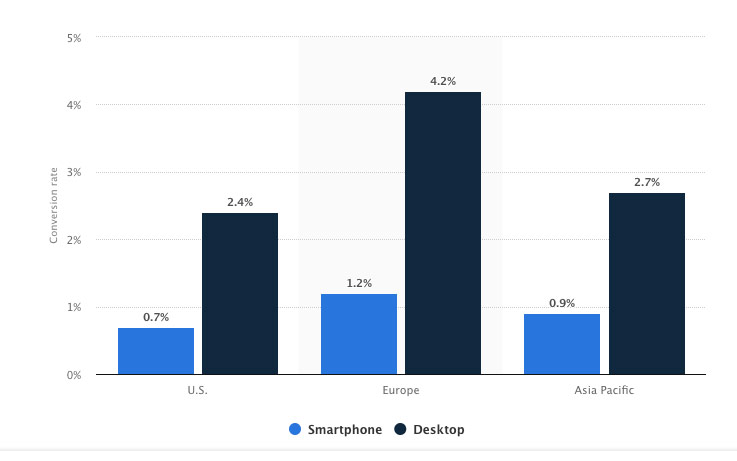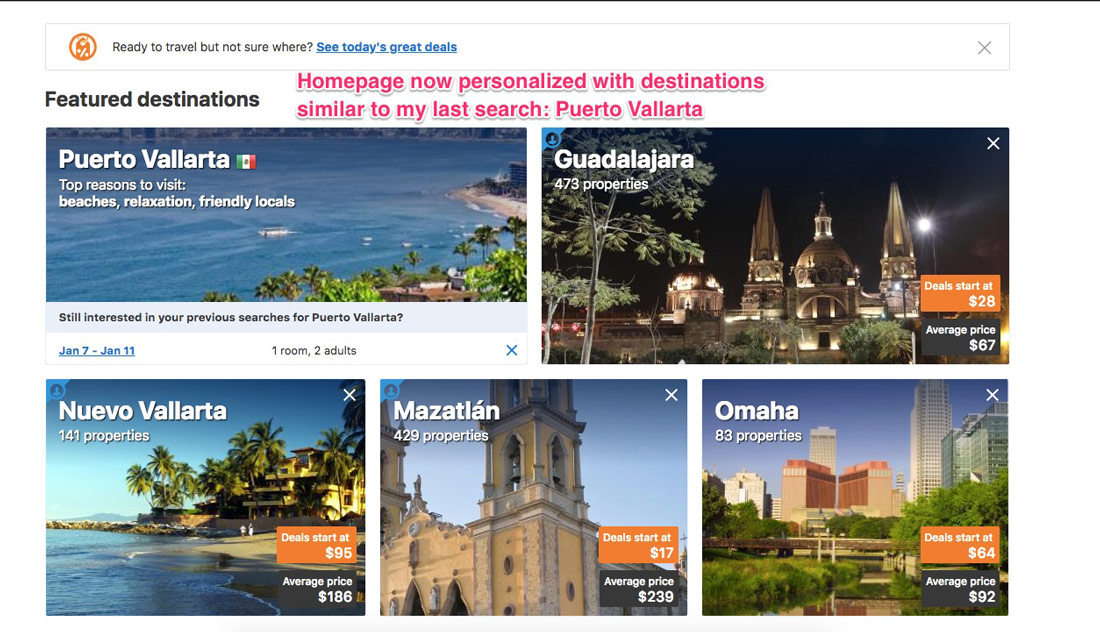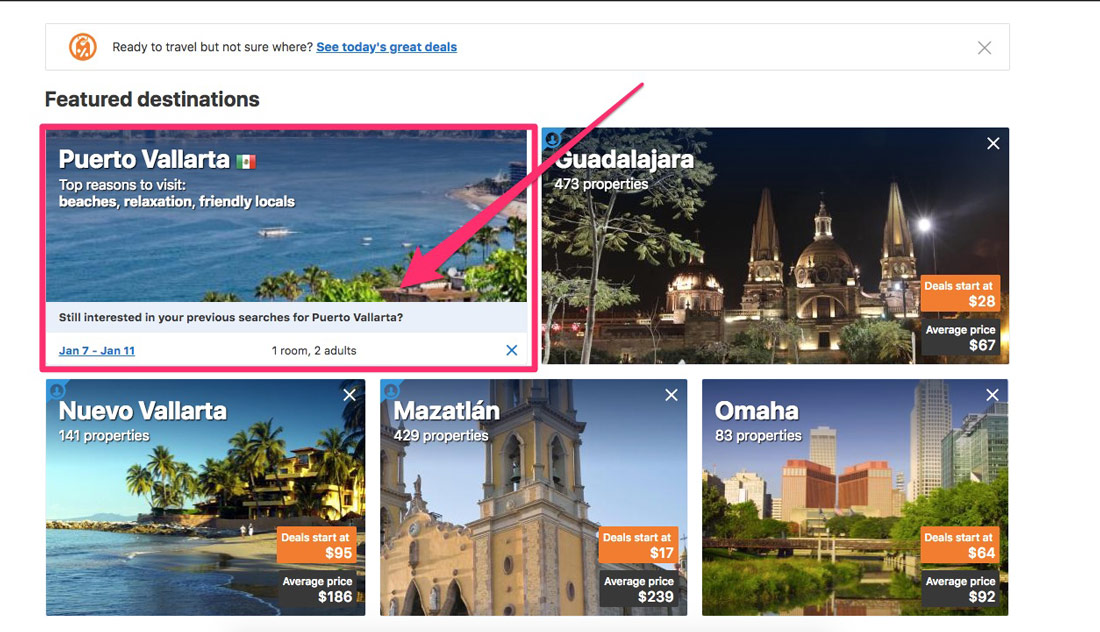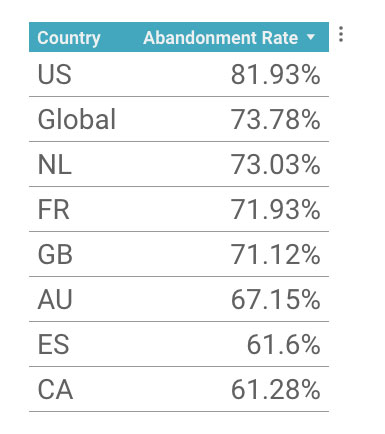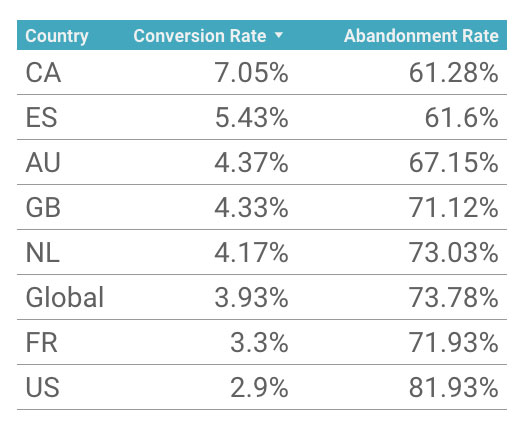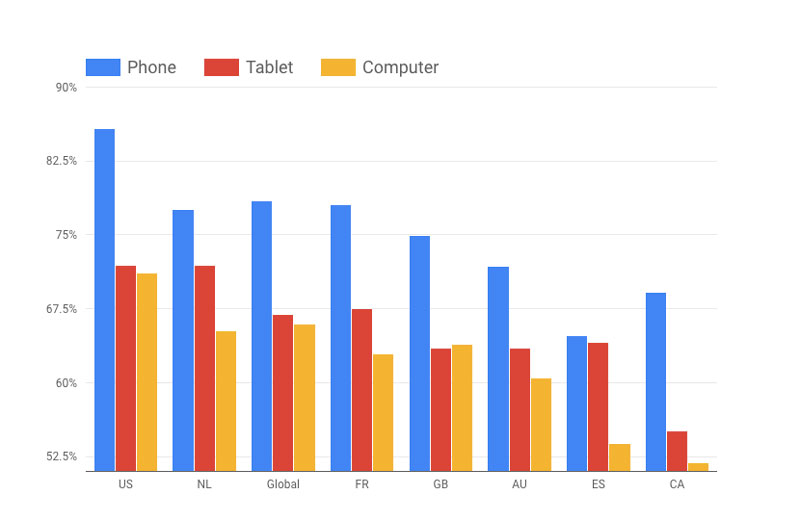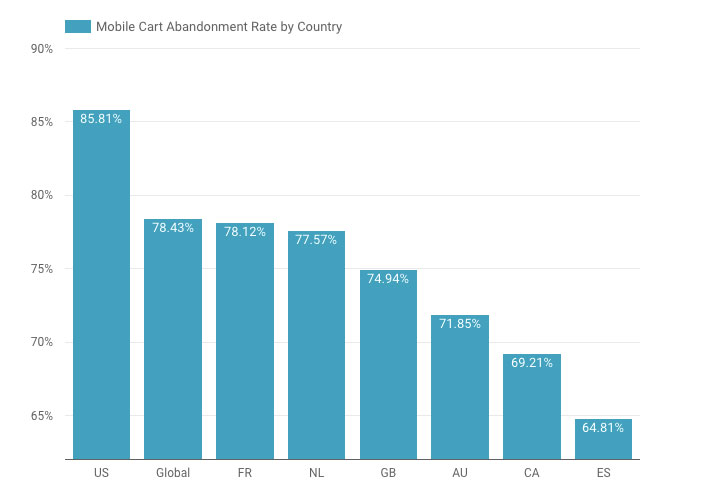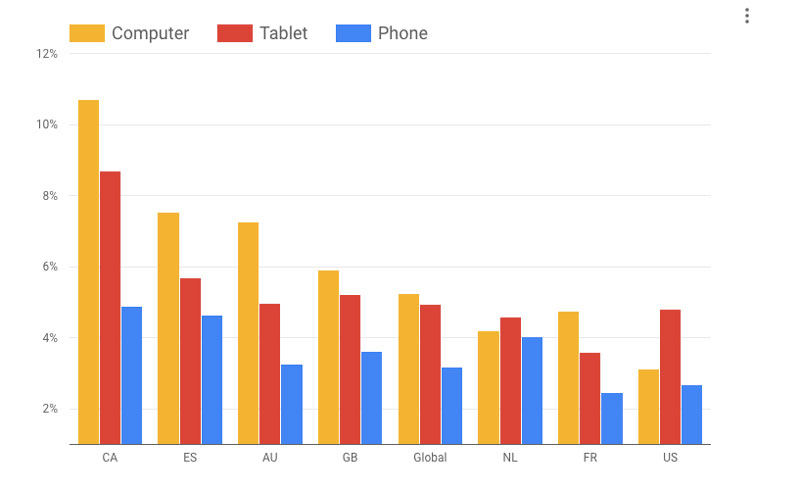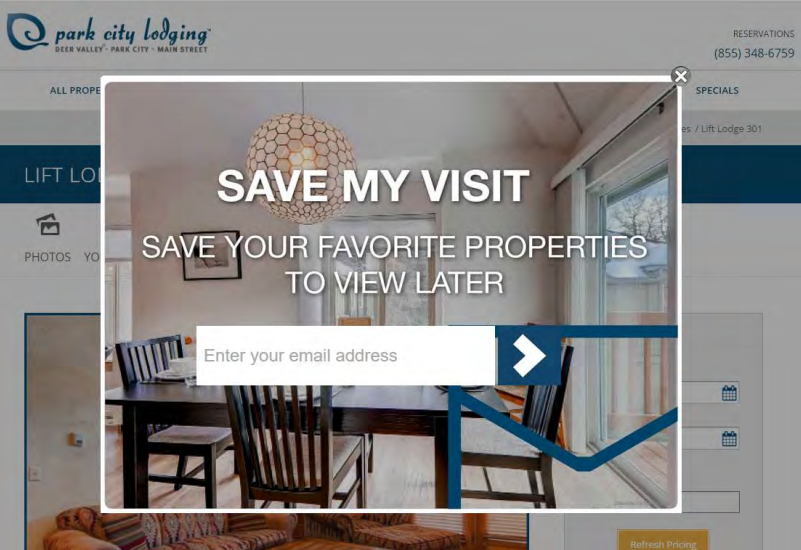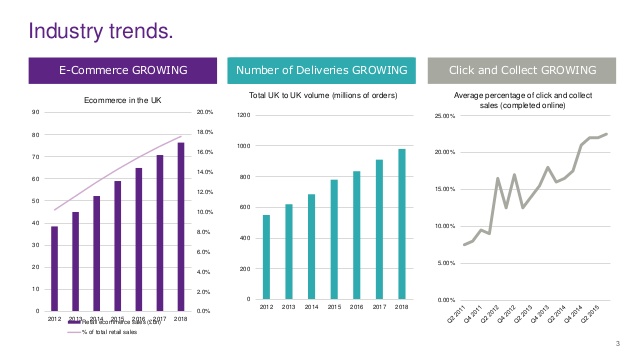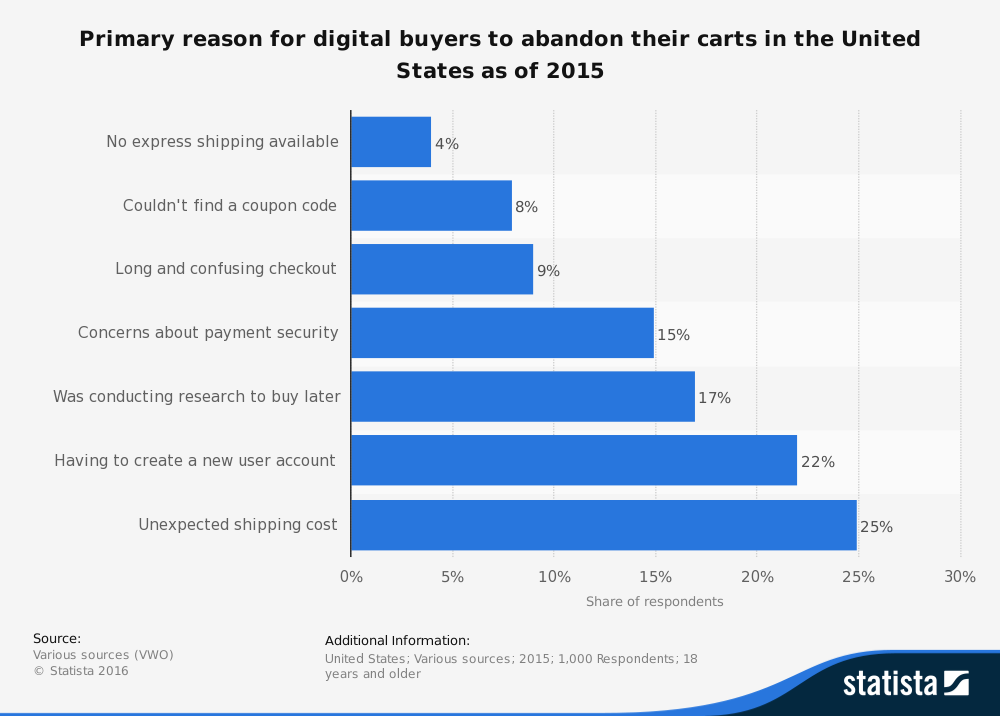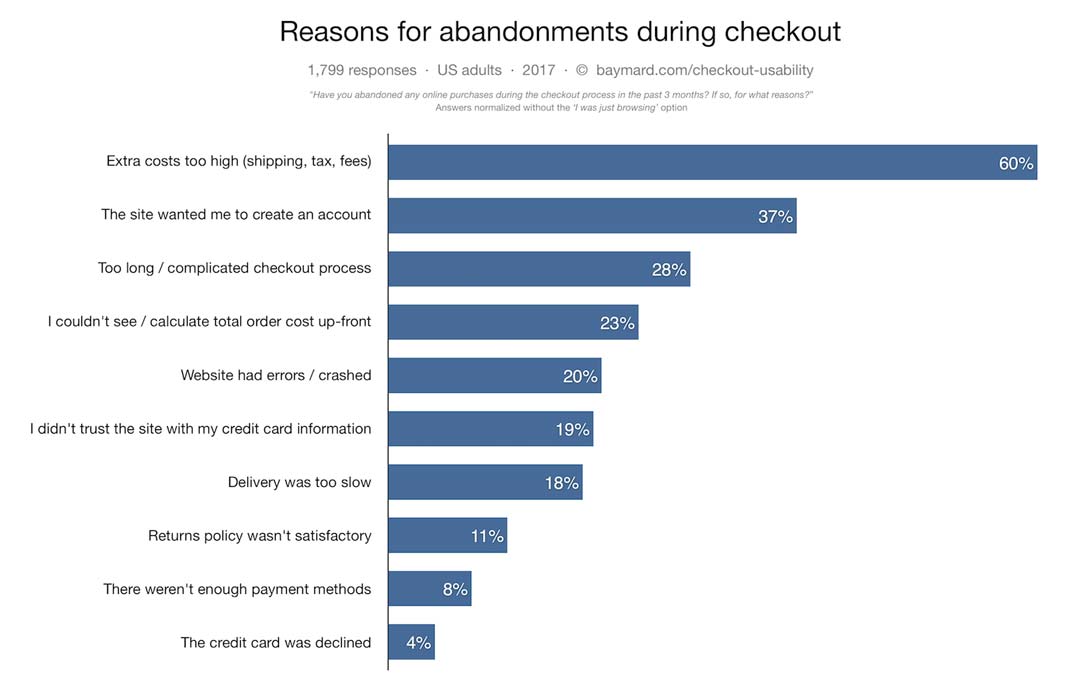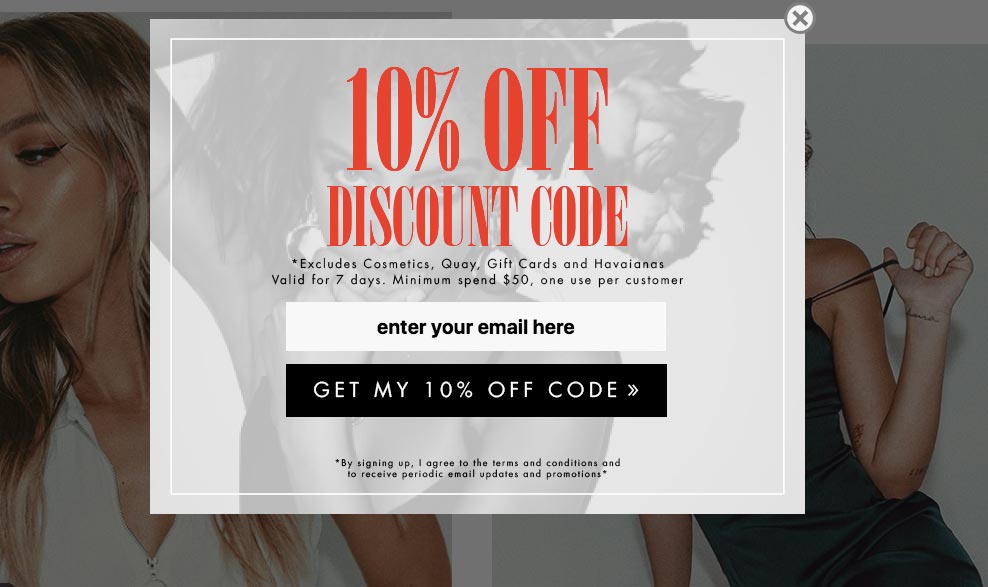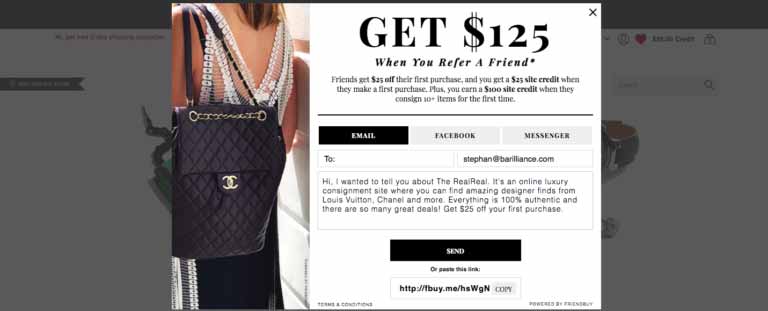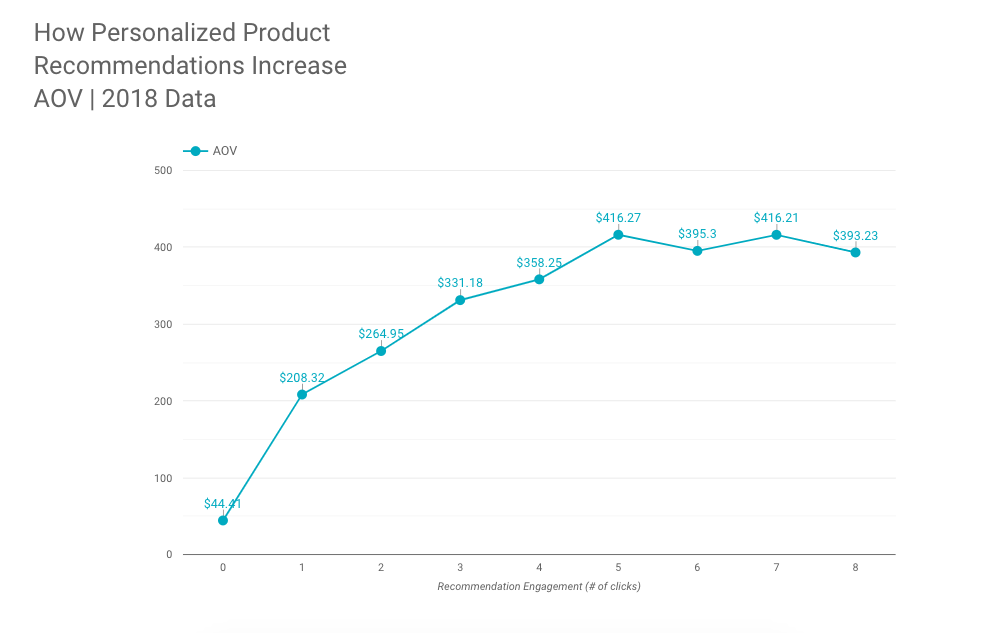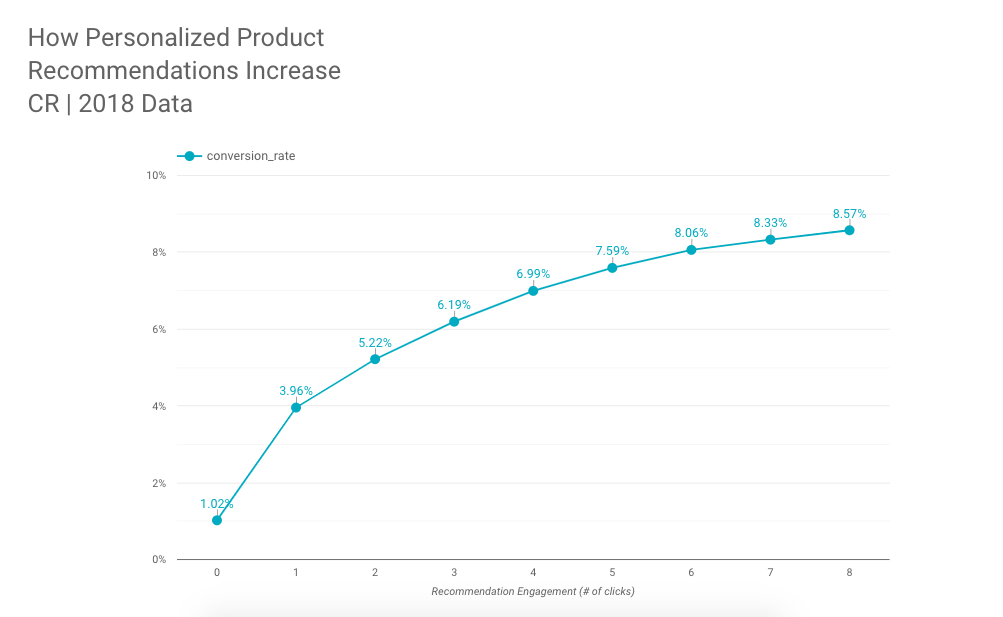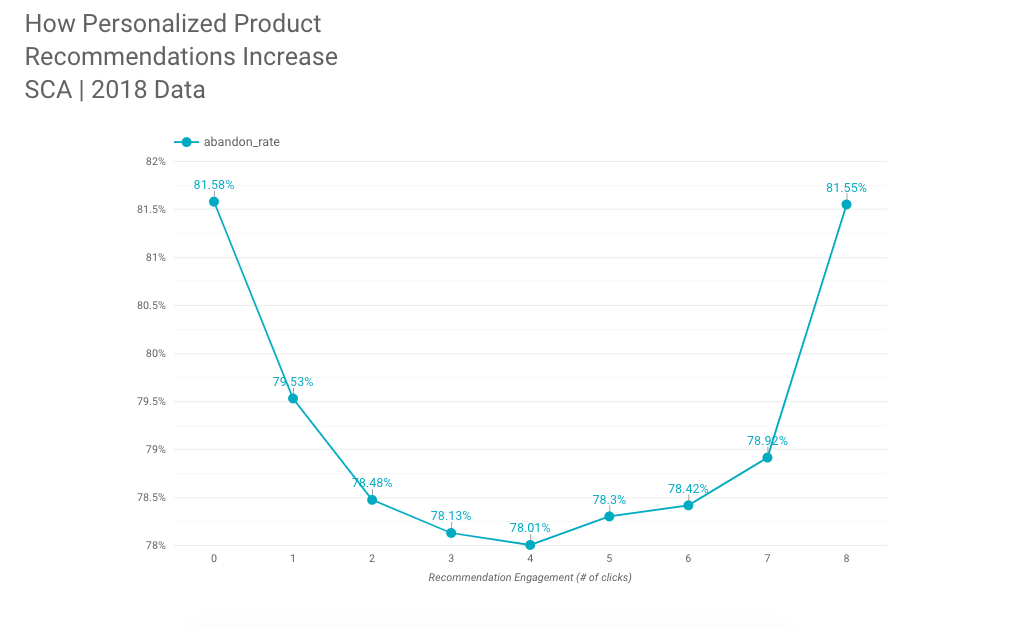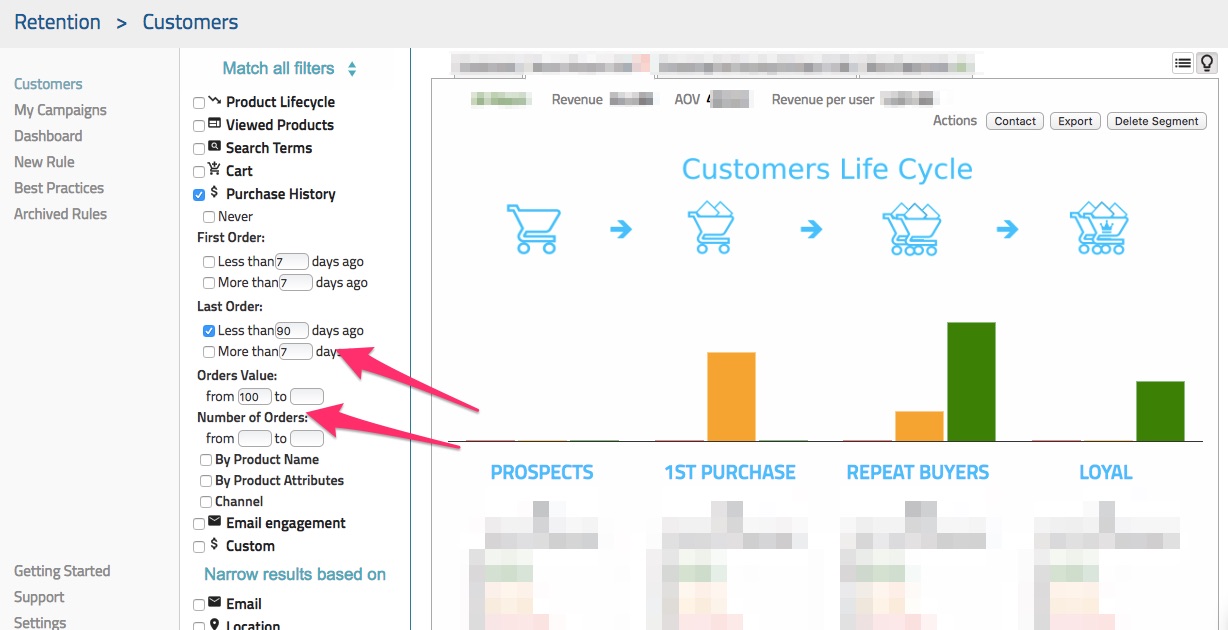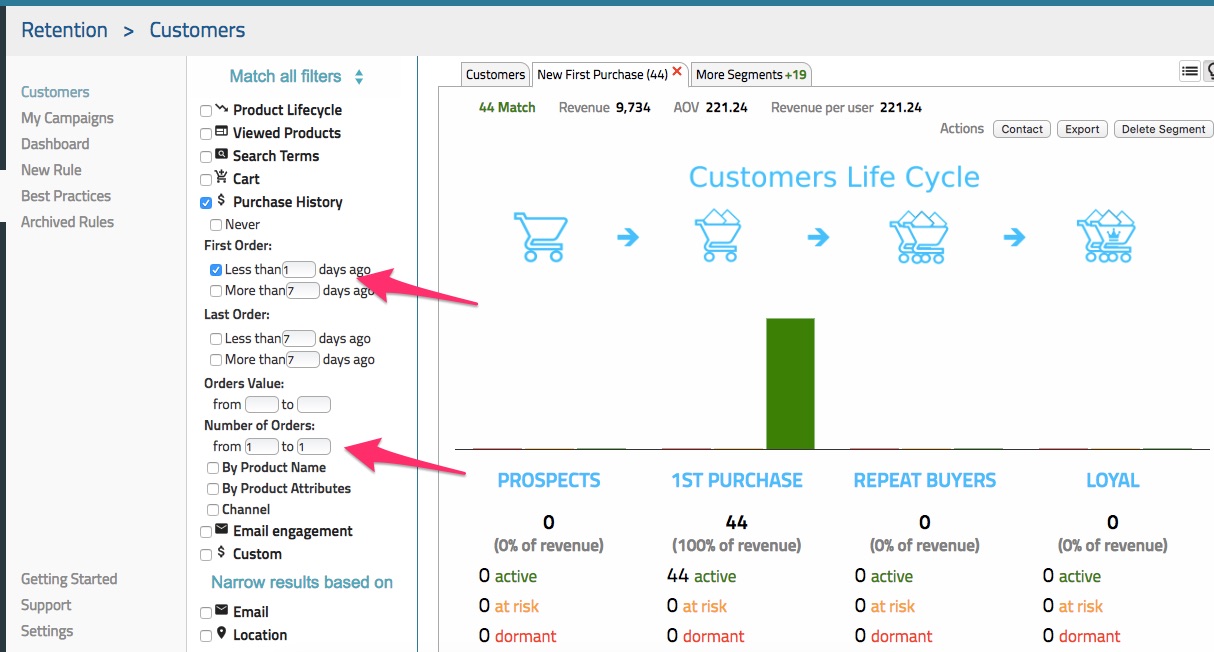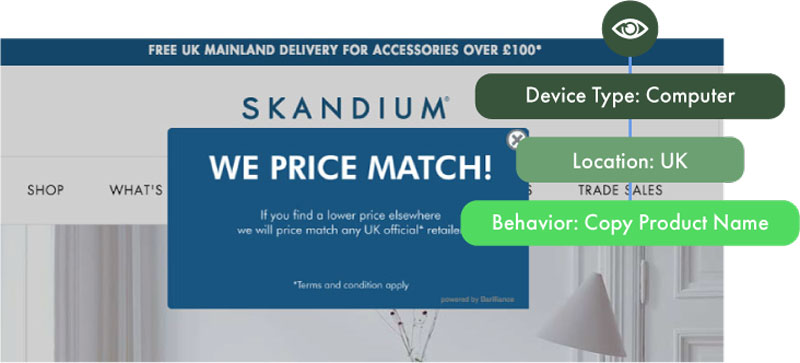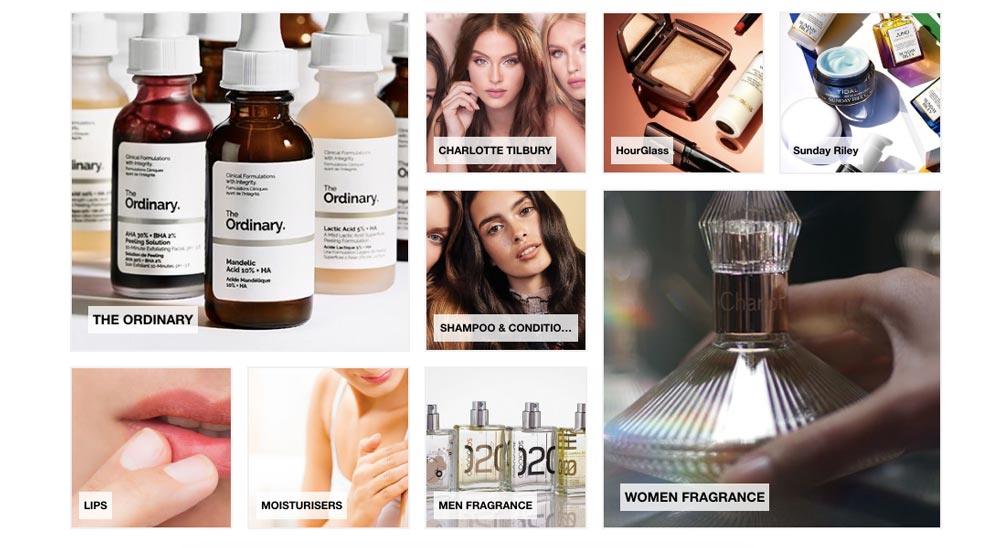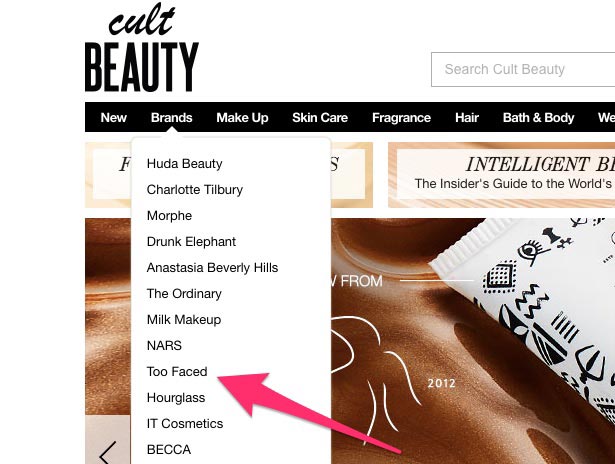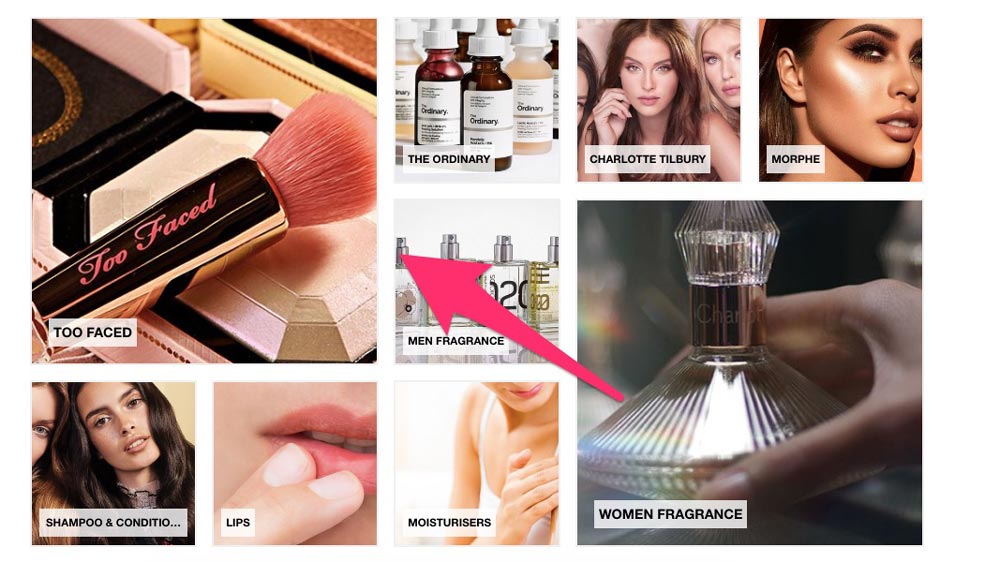Cart abandonment emails work.
The problem is that a ridiculous 269 billion emails are sent every single day.
This guide reveals how the best eCommerce stores are getting their abandoned cart emails opened. We reveal cart abandonment subject line tactics and strategies, along, with the exact copy, used by the most successful stores of 2018.
Let's begin.
Note: This post has been updated to reflect the current cart abandonment strategies retailers are using in 2018.
The most common mistake in cart abandonment email campaigns.
According to our study covering 200 eCommerce stores worldwide, the highest performing cart abandonment campaigns recovered 40% of revenue!
The key?
Sending more than one email.
Despite this, the vast majority of eCommerce stores only sent one or two abandonment emails. To maximize conversions, you don't need to write a single cart abandonment email template. You need to write a minimum of three.
And the single most important factor of each email is the subject line.
Free Cart Abandonment Audit: Get a complete audit on your checkout process, with screenshots and next actions to take. Request Here.
The Single Most Important Part of Your Email: Subject Line
According to Chadwick Martin Bailey, 64% of people open their emails based on the subject line.
The challenge is, the best cart abandonment subject line is going to change depending on where in the funnel the email comes from.
The best cart abandonment subject lines result in incredible conversion rates.
- Email 1 - Sent one hour after cart abandonment, 20.3% Conversion Rate
- Email 2 - 24 hours after cart abandonment, 17.7% Conversion Rate
- Email 3 - 72 hours after cart abandonment, 18.2% Conversion Rate
In fact, a study of Barilliance clients found that using multi-step cart abandonment campaigns resulted in an average email conversion rate of 18.64%!
My favorite cart abandonment subject lines of 2018
I’m about to share with you my favorite cart abandonment subject line example.
The Honest Company focuses on natural health and food products, and is currently valued at $1.7 billion.
A huge factor in their amazing success is their ability to maximize revenue from each site visitor. Look at how well they construct their cart abandonment subject lines to compel the prospect to click through and complete their purchase.
Email #1
I love this subject line for a number of reasons.
First, it has great voice and tempo. It is short, direct, and upbeat. Second, The Honest Company makes the best use of customized email preview text I saw during the study.
They employ brackets around an all cap sized [OPENED] to stand out and tease a "to see" with ellipsis for good measure.
Email #2
The second email was sent exactly 24 hours after the first.
It was congruent in tone and voice to the first email. Even though the words themselves were simple, they convey an upbeat, friendly tone.
Again, The Honest Company makes excellent use of the preview text.
Lastly, The Honest Company uses a new tactic in their second email - urgency. They accomplish this through an imposed scarcity of an expiring cart, and the copy centers around the fact that their cart will be expiring soon.
Email #3
Their third abandoned cart email follows the cadence of the second, triggered to send 48 hours from the first.
Here, the subject line puts even more focus on urgency and loses the friendly tone. Instead, it is more matter of fact, underlining the urgency of the subject line.
Lastly, the preview text is again used to great measure. In this case, The Honest Company hints at an added benefit of free shipping.
While I wish this line was more personalized based on the shopper's cart, it still accomplishes it's goal of imposing time pressure and adding incentive to act now.
Email #4
The final subject line in the sequence is a last chance email.
What is most instructive is how persistent The Honest Company is once they have a lead with demonstrated purchase intent.
Despite the customer not responding to previous emails, they don't give up. Instead, they keep their promise, expire their cart, and invite them to come back.
The Honest Company used a variety of techniques to create a fantastic. abandoned cart campaign.
As we went over company after company, we saw many recurring themes, tactics, and strategies used. We consolidated the most common subject line types below, and provide a few examples for your swipe file.
8 Types of Abandoned Cart Email Subject Lines
In total, we discovered 8 subject line archetypes that retailers used to maximize conversions.
Accept My Bribe Subject Lines
Incentives work.
You want to be abundantly clear that your prospective customer is getting hooked up with an excellent deal if they complete the purchase. Words such as deal, promotion, % off are all powerful trigger words for price conscious shoppers.
Bonobos executes this subject line perfectly.
The bribe is upfront and clear. The call to action is direct, and uses an active verb. Empty your cart - save 20%.
One important best practice when using incentives is email suppression. Make sure the technology you are using is capable of understanding when a customer redeems an incentive so that they do not receive further incentives down the line. This is something that Barilliance comes standard with, and is an important feature in any cart abandonment technology.
Accept My Bribe Subject Line Template Examples
- Empty your cart with XX% off.
- Take XX% off your cart before it's gone.
- {Company Name} XX% off on your entire order for 24 hours only
Curiosity Subject Lines
Curiosity based subject lines are the exact opposite of the Accept My Bribe types. Instead of being direct and upfront with your offer, these headings get prospects to click through because they pique interest.
Everlane lets their prospects know that they are about to receive something. They just won't reveal what that something is until they click through.
Again, I encourage you to contrast this to the example above as they really are two sides of the same coin. They both focus on creating value, but pull the reader into opening the email in completely opposite ways.
Curiosity Subject Line Template Examples
- A Gift For You
- Hi {Customer Name}, continue shopping with a discount!
Product Shout-Out Subject Lines
Consistency and recognition are powerful motivators to complete purchase.
Product shout-out subject lines leverage this to it’s fullest. They are to the point, and resurface the want or need the customer originally had when they placed the product in their cart.
Here, The RealReal uses a simple, friendly tone. They then personalize the subject line with dynamic cart insertion to create a relevant message to their prospect.
Product Shout-Out Subject Line Template Examples
- Still Deciding? Your {Product Name} Is Waiting!
- {Product Name} might be the one - Shipping and returns are both free
Suggestive Subject Lines
Suggesive subject lines often make use of the Assumption Principal, which underpins the famous “assumptive close”.
The Assumption Principal functions by assuming the customer has already decided to make a purchase. In other words, it implies that the reason the customer abandoned their cart is because they forgot it rather than any other issue, such as costs, shipping, or finding a better alternatives.
Forever 21 gives a standard example. The subject line is simply "Did you forget about me?", and can easily fit for most brands.
Suggestive Subject Line Template Examples
- Forgetting Something?
- {Customer Name}, You Forgot Something!
Friendly Subject Lines
People don’t always appreciate the hard sell.
Simply being nice is a great way to engage prospects on a personal level. These subject lines establish a relationship that is not transactional based. Instead, they focus on being "friendly".
Chubbies is a great example of this style. The subject line isn't trying to sell anyting.
Instead, it focuses on being human, greeting their prospect the way a friend would great someone they haven't seen in awhile. The body of the email carries the same voice.
Friendly Subject Line Template Examples
- Howdy Bud
- Where'd You Go?!
Customer Service Subject Lines
Customer service subject lines actively try and solve customer's problems for not completing their purchase.
Oftentimes, these subject lines open a conversation with a simple question such as "Was there a problem with your order?" to learn what the issue was.
Customer Service Subject Line Template Examples
Brand Personality Subject Lines
You don’t need to make an offer in the heading to get your abandoned cart email opened.
Humanity centered subject lines work great. Brand Personality lines do so with a focus on establishing the type of relationship you want with your customer. Oftentimes, these subject lines use humor to emulate a real conversation.
Here, Mouth plays on their name and stays light/playful throughout their copy calling their products "goodies" in the preview text.
If you go this route, make sure that your tone is consistant throughout all of your interactions with your customer.
Urgency Inducing Subject Lines
Urgency and scarcity are often cited as the most powerful psychological ploys to get customers to act.
We see eCommerce brands create urgency in one of three ways.
The first is centered on the cart itself. Sometimes, they set the cart to expire, creating a sense that the customer needs to complete their purchase now. This is the tactic that The Honest Company used above.
Second, retailers create urgency around specific products within the cart. It may be a limited item, selling fast, or approaching out of stock.
Lastly, you can create urgency in your subject lines by pairing it with an incentive. Many retailers create discount codes that are only valid for a limited time to get customers to compete their purchase.
Customer Service Subject Line Template Examples
- Hurry, the items in your cart are going fast!
- Your cart is about to expire - still interested?
You can learn a lot from successful campaigns.
Ultimately though, you are in an unique market, at a unique moment in time, with unique customers. Take these subject line examples and tailor them to fit your company based on your own brand.
Lastly, you can (and should) personalize your subject line as much as possible, whether through their shopping behavior, cart contents, or previously gathered information.
Subject Lines That Get Opened
Below are real examples of cart abandonment subject lines used by some of the most successful retailers in the world.
We've organized the subject lines by industry to make it easier to navigate and compare across industries. We'll be adding to this list over time as we gather more and more examples.
Note* When the email preview text was utilized to complement the subject line, we placed the preview text after a hyphen.
Fashion Cart Abandonment Subject Lines
Company: The RealReal
Email #1: Still Deciding? Your Dolce & Gabbana Three-Button Wool Blazer Is Waiting!
Company: Warby Parker
Email #1: Downing might be the one - Shipping and returns are both free
Email #2: Downing felt the Connection
Company: Bespoke Post
Email #1: You've Left Something Behind
Email #2: Forgetting Something?
Company: Bonobos
Email #1: Empty your cart with 20% off.
Email #2: Take 20% off your cart before it’s gone.
Company: Modern Citizen
Email #1: A gentle reminder...
Company: Chubbies
Email #1: clocking in
Email #2: Howdy Bud
Company: Surfdome
Email #1: Thanks for visiting
Company: Forever 21
Email #1: Did you forget about me?
Company: Black Milk Clothing
Email #1: Where'd You Go?!
Company: SurfStitch
Email #1: Reminder: Get Your Items Before They Sell Out
Company: BooHoo
Email #1: Don't miss out! Your basket expires soon
Company: Everlane
Email #1: A Gift For You
Company: Under Armour
Email #1: Your Cart’s Loaded & Ready To Go - Free Shipping. No Minimum.
Email #2: UA Curry 4 Low Is Still in Your Cart
Health & Beauty Cart Abandonment Subject Lines
Company: The Honest Company
Email #1: Cart Reserved! [OPEN] to see…
Email #2: Don’t miss out! Your cart is expiring soon…
Email #3: Your cart is about to expire - You may qualify for free shipping >
Email #4: Cart Expired - [Items might still be available] - your cart expired!
Company: Urban Skin Rx
Email #1: Stephan, You Forgot Something!
Company: EyeBuyDirect
Email #1: EyeBuyDirect 15% off on your entire order
Email #2: EyeBuyDirect 15% off on your entire order for 24 hours only
Grocery Cart Abandonment Subject Lines
Company: Thrive Market
Email #1: Oops, you forgot something
Email #2: Hurry, the items in your cart are going fast!
Email #3: Complete your purchase now - you made great choices. Check out now
Company: Mouth
Email #1: You left your Mouth open!
Other eCommerce Cart Abandonment Subject Lines
Company: Real Truck
Email #1: There’s something in your cart.
Company: Shower Pass
Email #1: We saved your cart for you
Email #2: Your cart is about to expire - Still interested?
Company: FloraQueen
Email #1: Hi Stephan, continue shopping with a discount!
How one Barilliance Customer Improved CTR by 26.96% with one Subject Line Change
Lastly, I want to share with you the power of testing different abandoned cart email components.
Barilliance comes with A/B testing that allows you to experiment and achieve higher results over time. Skandium, a furniture eCommerce store, tested two versions of their subject line and found a dramatic increase in CTR using dynamic product injection (+26.96% CTR).
You can see the full case study here.
Next Steps
The subject line is the first line of a cart abandonment email. You still have a long way to go. Below are some additional resources for you as you build out your own cart abandonment campaign.
- Learn the best strategies with complete cart abandonment email templates here.
- Learn how to put together an entire shopping cart abandonment campaign here.
- Learn how Barilliance empowers hundreds of retailers to execute these strategies here.
- Request a free cart abandonment audit. Receive annotated screenshots and action steps to recover sales here.
The post Abandoned Email Subject Lines: Definitive Guide (Updated 2018) appeared first on Barilliance.
